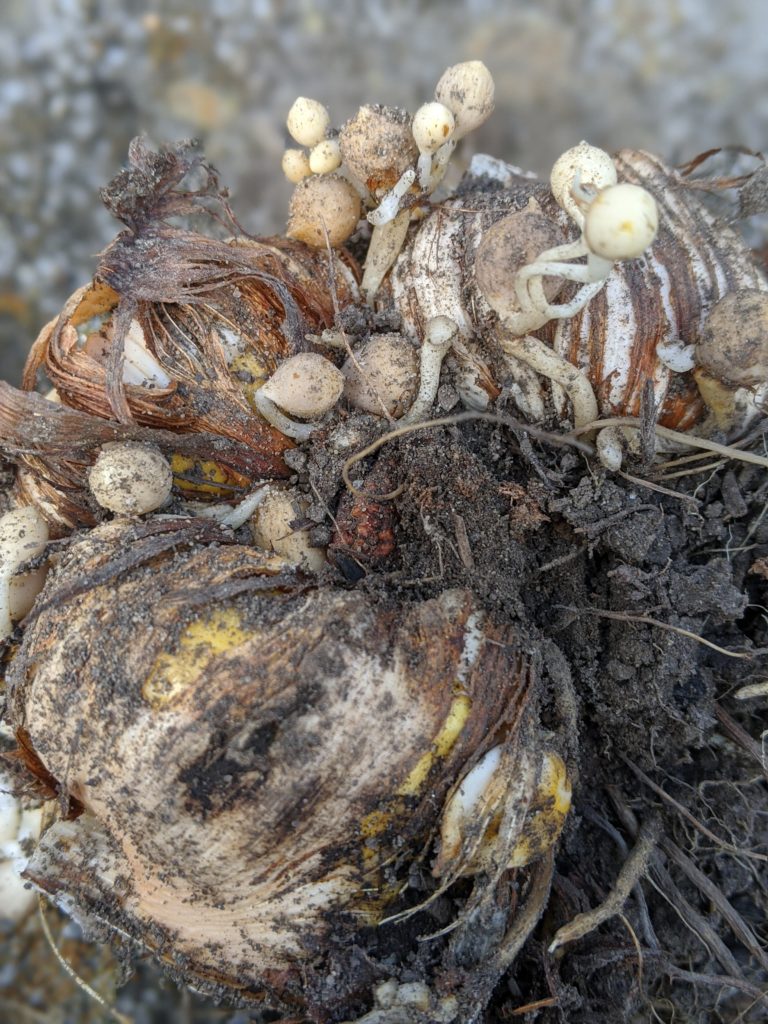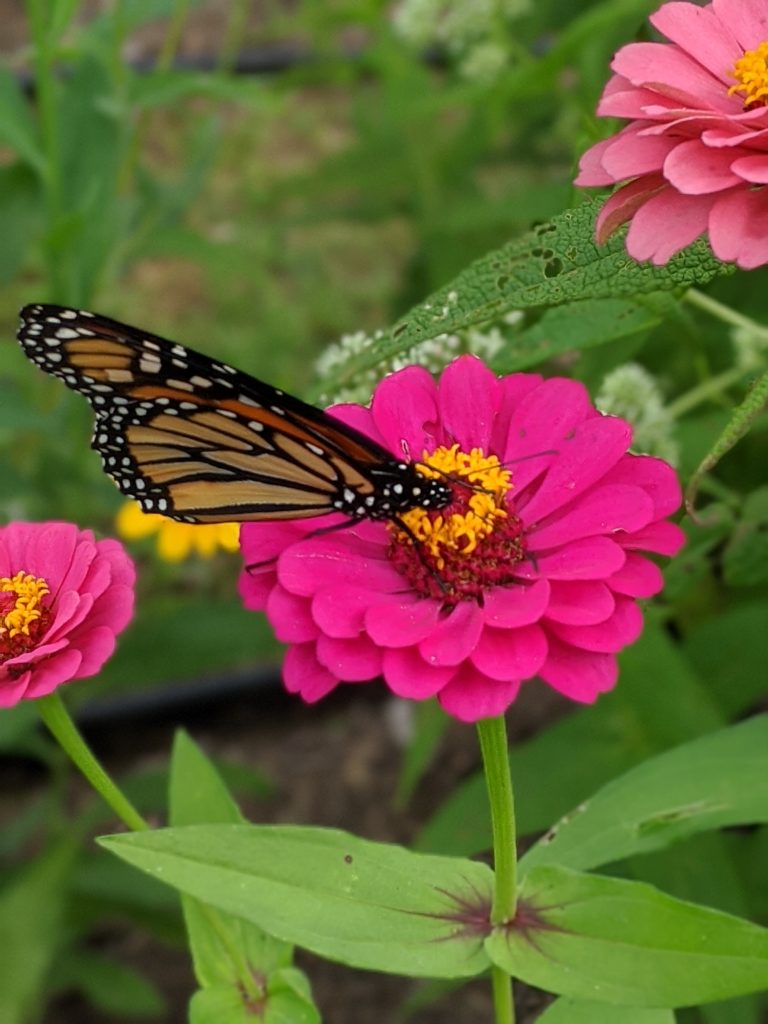
Gladiolus grow from corms, not bulbs, like I have always assumed. There is a difference as explained by this article on The Spruce, “…true bulbs are divided into layers (think of an onion), including a papery outer layer. Corms are not divided in this way; rather, they are solid units.” I have learned too that rhizomes and tubers are similar asexually reproducing storage units for plants. I found this article helpful and to-the-point about the differences.
Both bulbs and corms asexually reproduce genetic clones of the parent plant called bulbils or cormlets (as seen in the above picture).
I am storing these corms in my basement along with some dahlia tuberous roots a friend gave me. Once the threat of frost is passed (which feels an unbelievably unknowable thing in this neck of the woods) I will place these corms and tubers into the ground and hope for the best.
Under the ground outside are some fresh tulip bulbs, old daffodil bulbs, lily bulbs, iris rhizomes, and the roots of other perennial plants I haven’t yet learned fully about like tickseed and peonies and rose bushes. I know that their leaves soak up as much food as they can from the sun before dying away, storing it all deep underground, waiting for it to be safe to grow again.
Under the house and under the soil, all under foot, life is waiting. I wonder if when the bear or the groundhog crawls into her hibernation place she worries about the world she will emerge into in the spring. I wonder if the iris rhizomes that have lived here for five years, transferred from my mom’s yard where they have lived, I think as long as I’ve been alive, worry down there under the ground if the sun will shine again, if the rain will come again.
Do they just wait and hope for the best?
Reptiles like the box turtle enter brumation. They don’t sleep; they dig holes, climb in, and basically freeze. Given the current turmoil here, I think I might welcome 3-4 months of frozen, blissful unawareness. Still, think of that box turtle submerging into the cold ground, letting go of absolutely all control. Think of that waiting.
We know many birds and insects, like the monarch butterfly, migrate to warmer climates.

See, the monarch, she does not wait, but she must be hoping for the best. The monarch who departs the North will not make the return trip. She migrates hoping the offspring she will deliver along the way will find a hospitable environment upon their return. Four generations are involved in their migration process. If I see a monarch butterfly in the pollinator garden in our city park next August, it’s because some ancestor did her job even as her world grows more and more dangerous due to human activity.
It’s probably just wishful, poetic, romantic thinking to ponder that roots or mammals or reptiles or insects hope. I mean, for all my love of metaphor, I believe in the science that explains instinct and evolutionary biology. Still, my faith calls me to go further — that driving everything is the hum of divine purpose embedded in all of physical creation. Maybe roots, mammals, reptiles, and insects don’t need to hope because they are so intimately associated with God’s purpose for them.
I’m not called to hibernate. I have no path for migration, even while I am not rooted in place. I cannot freeze and live.
And still the hum of my purpose is obsfucated by the noises of, well, everything that is not God. I have to bend low and stretch high; I have to run after it; I have to be still; I have to uncover and rebuild. I have to hope for it.
As the slow days of this year pass, I wonder more and more if this purpose isn’t to just be empty and ready, to be watchful and humble, to store up the sunshine, to feed, to eat, to water, to cry, to offer up every motion in love. To whisper the prayer — Let my vocation be life. Let it be good, let it be true, let it be Yours.
I didn’t know that! ❤️